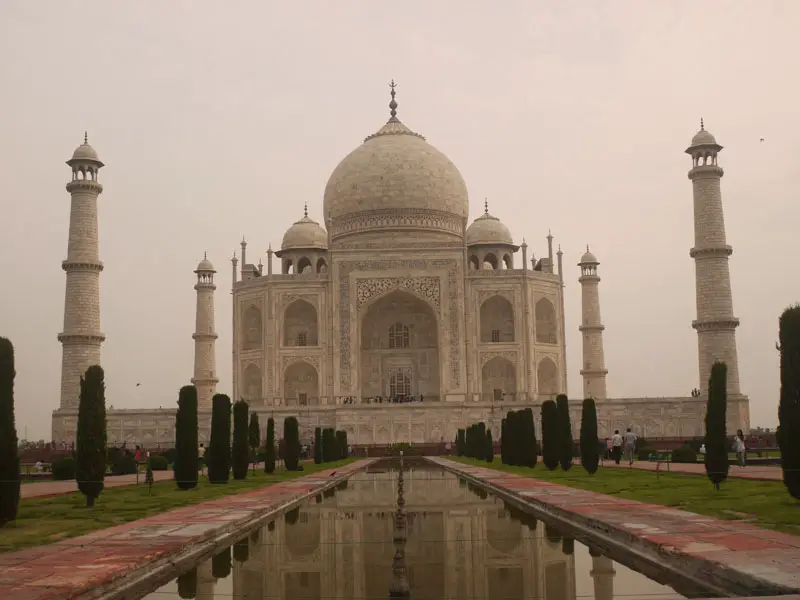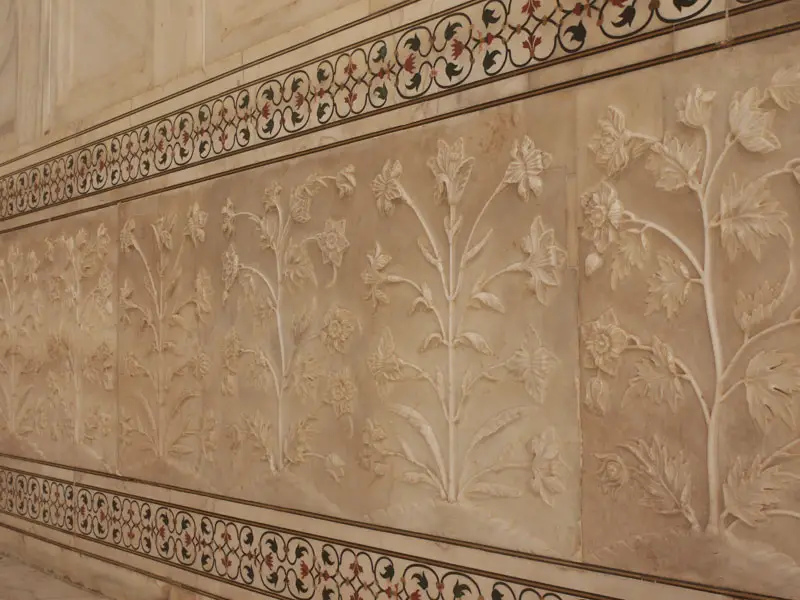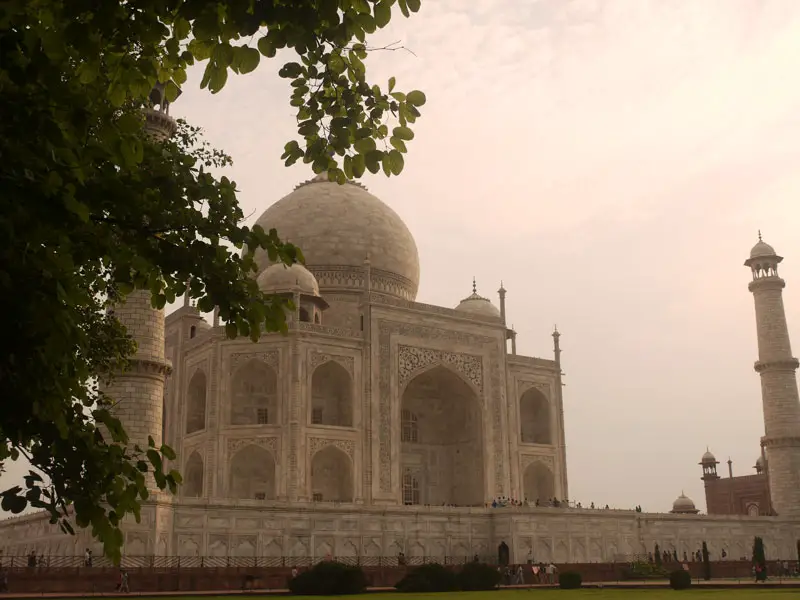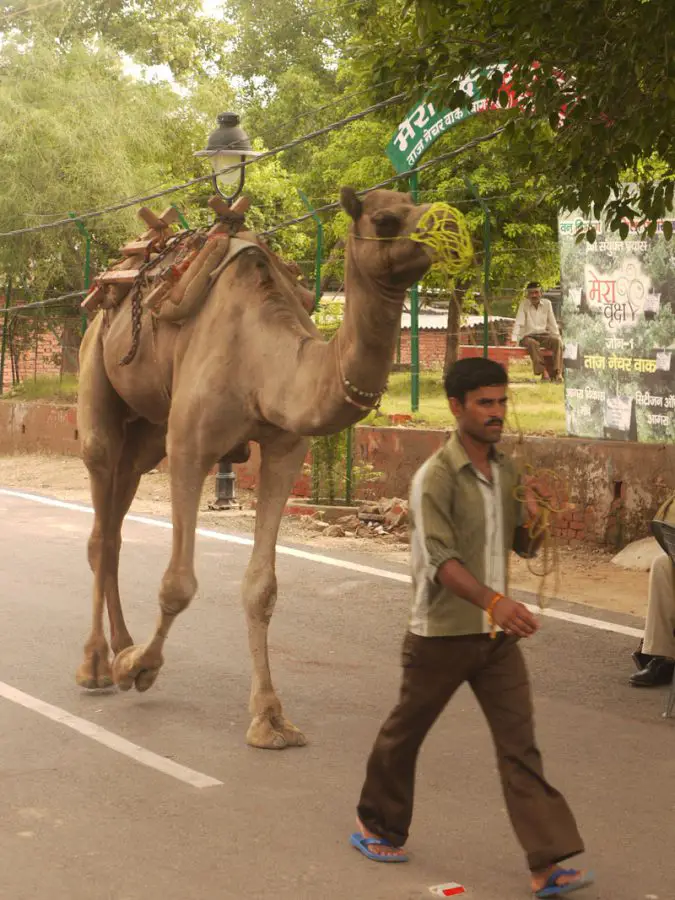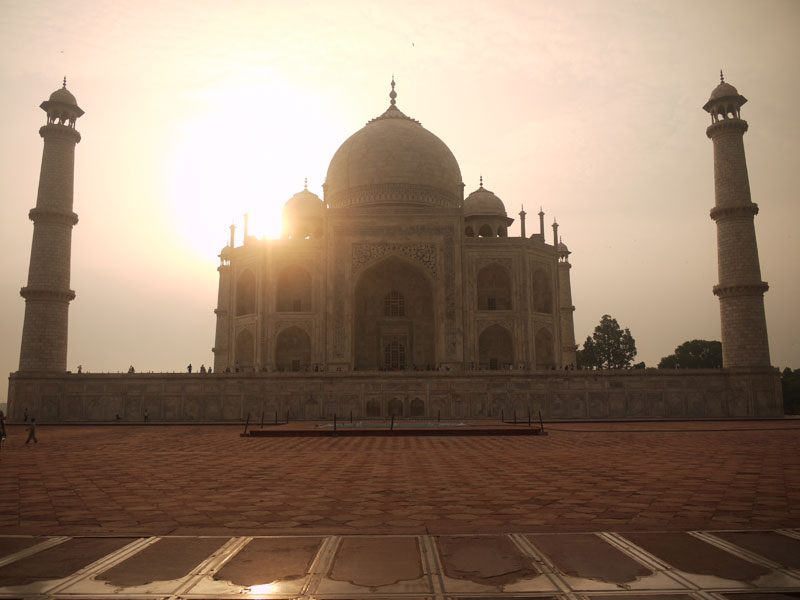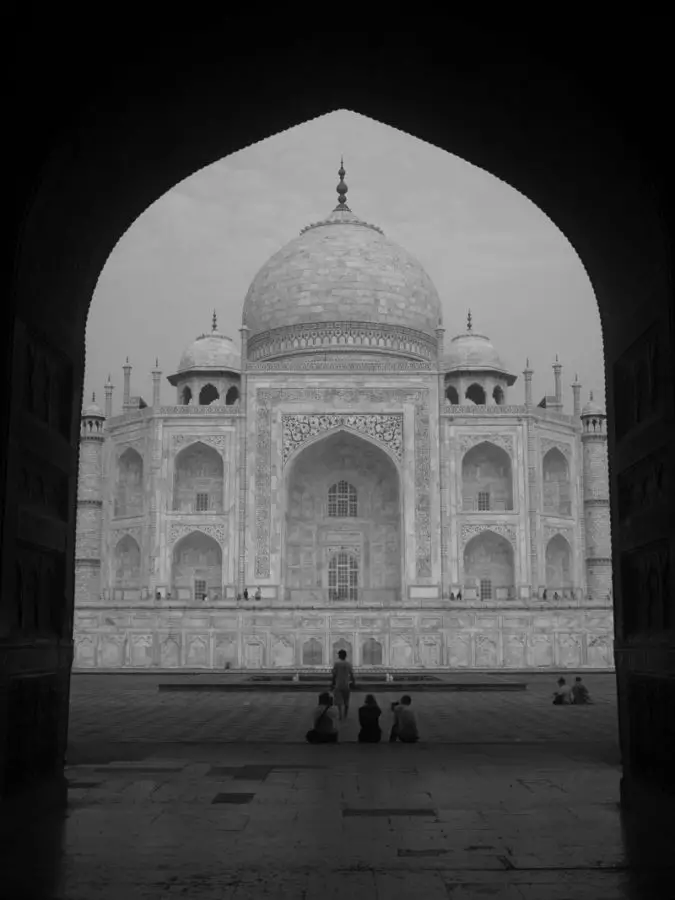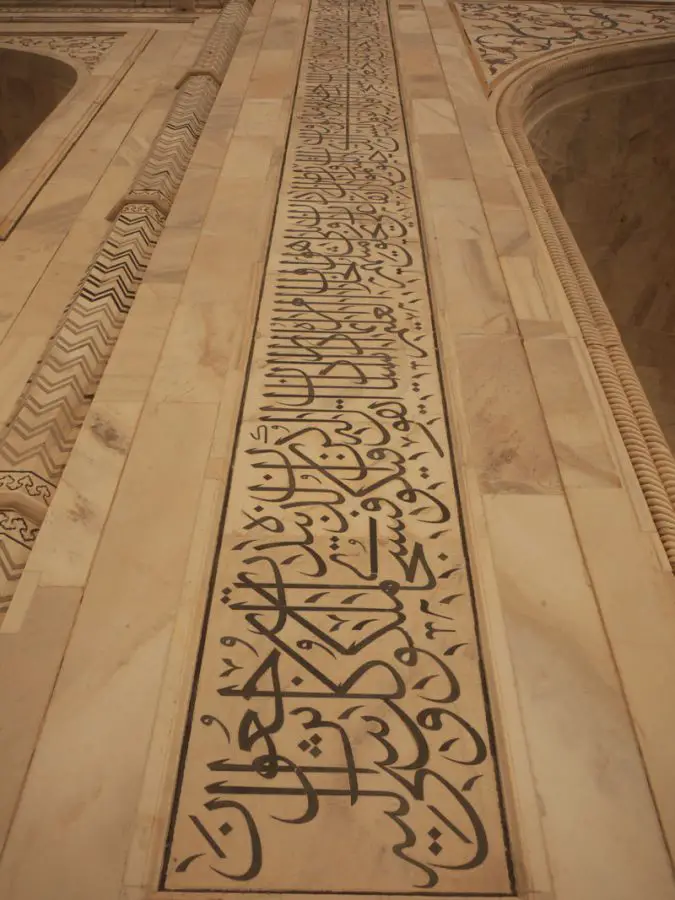Agra doesn’t ring any bells with most people but that’s because Agra itself as a city is just that, it’s just another Indian city with some interesting Mughal architecture dotted along the banks of the Yamuna River. However, every year more than 2.5million people visit this city to see one particularly outstanding structure. ‘The most beautiful building in the world’, ‘the jewel of India’ and ‘a perfect pearl on an azure ground’, every person young and old throughout the world can recognise and appreciate the beauty of the infamous Taj Mahal.
The Taj Mahal was built by Emperor Shah Jahan as a memorial for his third wife Mutaz Mahal, who passed away while giving birth to the couples fourteenth child in 1631. Legend has it that the Emperor was so heartbroken by his wife’s death that his hair turned grey overnight and it was the following year that construction began on the Taj. Twenty thousand labourers were involved in the construction of the main building over an eight year period and the Emperor spared no cost, bringing in experts from Europe to complete the marble inlay work which is dotted with thousands of semi-precious stones.
Local red sand stone was used in the construction and marble was sourced from nearby Rajasthan for the structure. Sadly for the Emperor he was imprisoned by his son after being overthrown in 1658 and his Taj Mahal views were limited to those from his cell in Agra Fort for the rest of his days. Eight years later, in 1666, Shah Jahan died and his body was transported along the Yamuna River and buried underneath the Taj Mahal, alongside his wife Mumtaz. A fitting end to a story of love and loss but the question still begs, what ever happened to wife number one and two? Where are their Taj Mahals? They must have felt a tad hard done by the Emperors enormous generosity towards wife number three, Mumtaz Mahal.
Agra, for us, was all about the Taj Mahal. Throughout the city there are a bunch of other mausoleums and there’s the famous Agra Fort overlooking the river to the north-west of the Taj. Our purpose for being in Agra however was to see the building which Emperor Shah Jahan himself said “made the sun and the moon shed tears from their eyes” and that’s where our focus remained. Viewing the building from different areas and from different vantage points seemed a logical approach and so we set about seeking out locations nearby that would offer us different perspectives of this magnificent building.
Arriving into Agra, we immediately made our way to the East Gate area, where our hotel was located. After checking into our room we continued to the roof and it was from here that we first saw the tall minarets and bulbous dome of the Taj, standing against the evening sky. It looked pretend, it was difficult to believe that that was it, one of the world’ most iconic buildings right there in front of us. The following evening one of the most beautiful, elaborate, five-star hotels I have ever seen afforded us an amazing sunset view of the Taj Mahal. Sipping on drinks which cost more than our room we watched as the sky turned pink-purple and the brilliantly white building slowly became silhouetted against the stunning colourful backdrop. Taj Ganj is an area just outside the South Gate, once home to the many labourers and artisans who worked on the Taj Mahal, now is the backpacker centre for visitors to Agra. Narrow, bustling streets are lined with guesthouses, hotels and restaurants all of which offer ‘best views’, some of course are much better than others. Luckily for us we found a rooftop with a great view looking out across the ramshackle roofs of Taj Ganj, kites dotted the sky and the mighty marble mausoleum dominated the skyline to the north.
On our third morning in Agra, we were up before dawn to beat the crowds and visit the Taj Mahal at sunrise. A lack of touts, vendors and rickshaw drivers at this time of the morning made for an unusually peaceful walk down to the Taj and other than a few people defecating at the side of the road we pretty much had the place to ourselves. Reaching the East Gate we were excited to finally be going inside the Taj Grounds to see the building up close and we joined the short queue where we were now standing in about tenth place for entry into the grounds. After a short wait we were moving and then it was through security before being left to our own devices.
It was great to be there so early and not have to compete for space for those classic Taj photos. A huge red sandstone gateway lies at the southern end of the courtyard and as you look through the massive gateway you can see the central dome framed beautifully by the archway which is inscribed with verses from the Quran. Passing beneath the gateway, we found ourselves inside the ornamental gardens which are laid out in the classic Mughal charbagh design, a square quartered by watercourses and an ornamental marble plinth in the center. On this marble plinth is a marble bench known as the ‘Princess Diana chair’, where Princess Diana was photographed sitting in front of the iconic building on her visit here in 1992. Here we were approached by a few self-proclaimed wonderful photographers, who in exchange for a few rupees took photos of us on the Princess Diana chair using our camera. To the photographer we were his models in a brief but very cheesy photo shoot, directing us through the shoot; “look into each others eyes”, “stand to the left”, “chin up”, “sit at each end of the chair”, he was pretty relentless and it was a shock to us both that he never once told us ‘you’re a tiger!’, maybe next time.
The Taj Mahal itself sits on top of a raised marble platform at the northern end of the gardens backing onto the Yamuna River. Looking up at the Taj, it looks almost as if it is floating against the blue sky, a genius design feature of the building. Strips of calligraphy surround the archways on all four sides of the structure outlining quotations from the Quran, the calligraphy increases in size as it gets higher from the ground but gives the illusion of uniformed size when viewed from the ground. Representing heaven is the Taj’s central dome, topped by a brass finial, it shows the contrast between heaven and the material world, represented by the square shape of the main structure beneath.This square building not only is identical on each of it’s four sides but also is constructed in such a manner that it is as tall as it is wide, 55meters, creating a structure of incredible symmetry.This central dome is surrounded by four smaller domes completing the design of the Taj Mahal. On each of the corners of the raised platform which the mausoleum stands upon is a forty-metre high minaret.
The four minarets are purely for decorative purposes, they don’t stand perfectly perpendicular and it’s still unknown whether this is due to three centuries of erosion or if it is a design feature so that in case of an earthquake the minaret would fall away from the central building. To the west of the Taj is a red sand-stone mosque and to the east is an identical building known as the jawab, which was built only for symmetry. Visitors are allowed inside the main mausoleum where the false tombs of both Mumtaz Mahal and Shah Jahan are surrounded by marble lattice screens inlaid with different types of semi precious stones. Mumtaz’s tomb is centered inside the Taj while Jahan’s cenotaph is to the left. Inside the mausoleum the only light is that coming in through the intricately carved screens set into the walls. The real tombs are in a locked basement room beneath the Taj and are not open to the public.
As we came out of the mausoleum we walked around the grounds as the sun came up behind the Taj. Standing outside the jawab to the west we watched as the sun slowly crept above the Taj illuminating the central dome in a magnificent manner. With the crowds still at a minimum we took our opportunity to walk around the grounds uninterrupted reflecting on our visit to one of the world’s most iconic buildings. Different countries around the world can be defined by their iconic structures; the Eiffel Tower, the Statue of Liberty, the Pyramids, the Great Wall and a thousand photographs of each are in circulation through every medium possible. When going to see sights such as these it’s not uncommon to leave a little disappointed due to being over exposed to the attraction before ever getting close to visiting it in real life. We were a little worried before going to see the Taj Mahal but if we’re honest it surpassed our expectations, standing below it looking up at the magnificent structure with it’s centuries old inscriptions and intricate carvings, it lives up to it’s reputation as the most beautiful building in the world.

Brian is a travel writer, photographer, blogger, travel addict and adventure-junkie. Being outdoors, getting off the beaten track and outside his comfort zone is what makes him tick. Brian’s the dreamer in the relationship; when he’s not travelling, he’s dreaming about it! Keeping fit, cooking, music and red wine take up the rest of his time.
Sign up for our free travel photography Ebook "Faces of Nepal" and you'll also receive our monthly newsletter.

